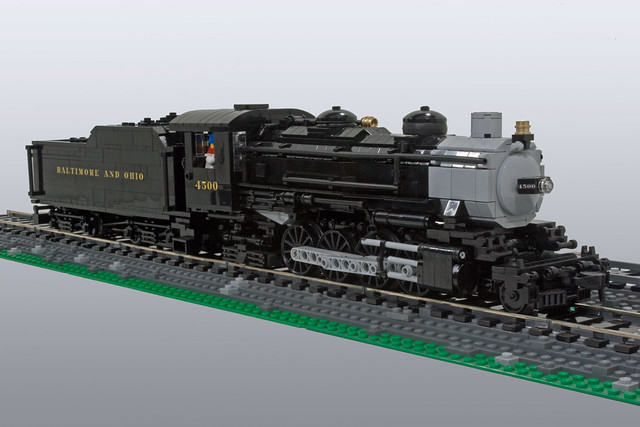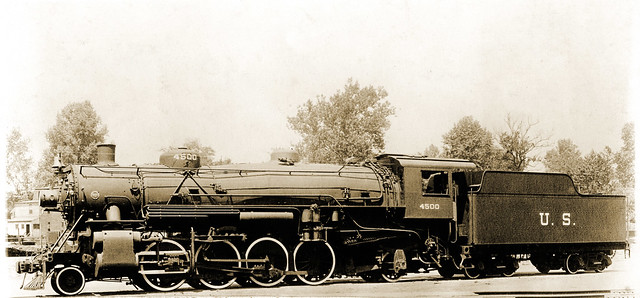| |
Baltimore & Ohio USRA Light Mikado #4500
Flickr Gallery for
#4500

During World War I, the United States federal government took control of the
nation’s railroads and formed the United States Railroad Administration (USRA)
to efficiently mobilize troops and supplies. The USRA oversaw the mass
production of standardized locomotives and operations of all privately owned
railroads. Consisting of representatives from ALCO, Baldwin Locomotive Works,
and Lima Locomotive Works, the USRA Locomotive Committee designed over 1,800
locomotives using the best of current technology. USRA control ended on March 1,
1920 but its durable locomotives continued to have a lasting influence on the
railroad industry.
The USRA Light Mikado was one of the standard steam locomotives designed under
the control of the United States Railroad Administration. This was the standard
light freight locomotive of the USRA types, and was of 2-8-2 wheel arrangement
in the Whyte notation. A total of 625 light Mikados were built under the
auspices of the USRA, with a further 641 copies built after the end of the
USRA’s control. The first, for the Baltimore and Ohio Railroad, was completed in
July 1918 and given #4500. The locomotives were considered well designed and
modern, and were popular and successful. Large numbers remained in service until
replaced by diesel locomotives. With later copies, over 50 railroads used the
type.
Constructed in just 20 days by Baldwin Locomotive Works, the B&O No. 4500 was
the first USRA locomotive produced under federal management. The No. 4500 was
equipped with the latest technology of its time, including a superheater and
stoker. The weight of the versatile locomotive was considered “light” by most
standards, yet it was quite powerful.
In the later years of its life, the No. 4500 operated on the B&O’s Ohio, Newark,
St. Louis, and Ohio River divisions. In 1957, the No. 4500 was renumbered as No.
300 to make room on the B&O roster for four-digit diesel locomotives. That same
year, the No. 300 retired from service, and was sent to the Baltimore & Ohio
Railroad Museum.
There it was restored to its original number. In 1990, the No. 4500 became a
National Historic Mechanical Engineering Landmark.
#4500 at the B&O RR Museum
While building this engine my main goals were to make this a sturdy design able
to be handled roughly with out falling apart, and to have a 100% reliable Power
Functions drive with a good balance of pulling power and speed. All while
maintaining a high standard of detail. I think I’ve done pretty well in
acheiving those goals and this engine has quickly become one of my favorites.
This is the first time I’ve built an engine as it apeared fresh of the erecting
shop floor. All my previouse steam engines have been depicted as they apeared
later in their carears. Here is #4500 as it apeared in a
USRA publicity photo following it’s completion.
Flickr Gallery for
#4500
Nate Brill ( Shuppiluliumas ) was kind enough to take some videos of #4500 at a
recent PennLUG display for me.
Mikado
Video 01
Mikado
Video 02

Cale
|
|
1 Message in This Thread:

- Entire Thread on One Page:
- Nested:
All | Brief | Compact | Dots
Linear:
All | Brief | Compact
|
|
|
|